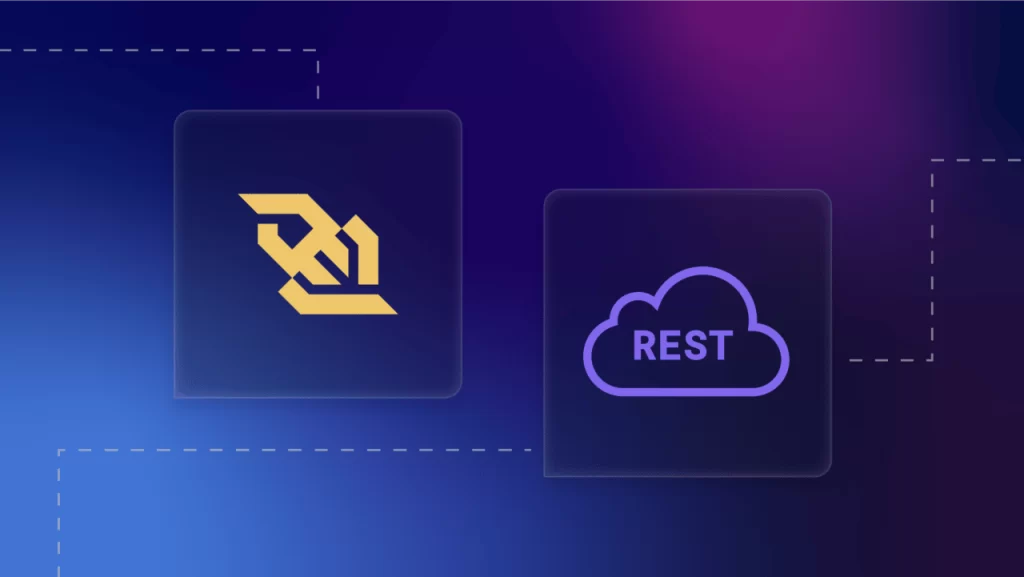Are you curious about how major social media platforms like Facebook maintain real-time chat functionality for millions of users simultaneously? By leveraging WebSockets, you can achieve similar seamless communication capabilities within your own web application software. Imagine the possibilities of instant updates and interactive features that can transform user engagement on your site. Explore the nuances of WebSockets and unlock the potential for dynamic, responsive interactions that will set your application apart.
Introduction to Real-Time Communication in Web Applications
WebSockets play a crucial role in modern web applications, revolutionizing real-time communication between users and servers. Have you ever wondered about the differences between WebSockets and Webhooks, and which one suits your project best? Let’s explore the unique capabilities of each to help you make an informed decision for your web development endeavors.
The Role of WebSockets in Modern Web Applications
How can modern web applications achieve real-time communication to enhance user experiences and operational responsiveness? WebSockets play a crucial role in modern web applications by enabling real-time, bidirectional communication between clients and servers. This technology is essential for developing interactive and dynamic web applications that require instant updates and live data streams. Below is a comparison table highlighting the key aspects of WebSockets and webhooks in web application development:
| Feature | WebSockets | Webhooks |
|---|---|---|
| Communication Type | Full-duplex | Unidirectional |
| Real-Time Updates | Yes | No |
| Connection Overhead | Low | High |
Comparing WebSockets and Webhooks: Which is Better for Your Project?
For determining the most suitable real-time communication method in your web application project, consider the unique strengths and characteristics of WebSockets and Webhooks. WebSockets offer a persistent, full-duplex communication channel between the client and server, allowing for instant data exchange and real-time updates. This technology excels in scenarios requiring frequent communication, such as chat applications or live collaboration tools. On the other hand, Webhooks provide a lightweight solution for event-based communication by sending HTTP POST requests to predefined URLs when specific events occur. They are ideal for triggering actions based on events like notifications, updates, or data changes. Choosing between WebSockets and Webhooks depends on your project requirements, with WebSockets prioritizing continuous data exchange and Webhooks focusing on event-driven communication.
Understanding WebSockets for Enhanced Web Application Software
To enhance your understanding of WebSockets for improved web application software, let’s start by exploring the technical foundations and benefits they offer in real-time applications. Understanding how WebSockets establish full-duplex communication channels can provide insight into their efficiency and scalability in facilitating interactive sessions. By grasping the advantages that WebSockets bring to real-time communication, you can harness their potential to create dynamic content and deliver immediate responses within your web applications.
The Technical Foundations of WebSockets
Understanding the technical foundations of WebSockets is essential for enhancing web application software capabilities. To delve into the core of WebSockets, consider the following key points:
- Full-duplex Communication: WebSockets allow simultaneous two-way communication, enabling real-time data exchange.
- Persistent Connection: Unlike HTTP, WebSockets maintain a continuous connection between the client and server.
- Low Latency: With reduced overhead, WebSockets offer low latency communication, ideal for real-time applications.
- Cross-Domain Support: WebSockets can communicate across different domains, promoting versatile integration possibilities.
- Event-Driven Architecture: WebSockets operate on an event-driven model, triggering actions based on specific events for efficient data transmission.
Benefits of Using WebSockets in Real-Time Applications
Enhance your web application’s real-time capabilities by leveraging the benefits of WebSockets. WebSockets offer low latency communication, enabling instant data exchange between the client and server without the need for continuous polling. This real-time interaction enhances user experience by providing live updates and notifications, making applications more dynamic and engaging. Unlike traditional HTTP connections, WebSockets allow for simultaneous two-way communication, enabling both server-to-client and client-to-server messaging in a single connection. This efficiency reduces overhead by eliminating the need to establish new connections for each exchange, resulting in faster data transmission and improved scalability. By incorporating WebSockets into your web application, you can create responsive, interactive experiences that meet the demands of modern users seeking seamless real-time interactions.

Setting Up WebSockets with FastAPI
When setting up WebSockets with FastAPI, you’ll find a step-by-step guide to implementing them efficiently. Discover best practices for configuring FastAPI WebSockets seamlessly for optimal performance. These points will help you establish robust real-time communication in your web applications.
Step-by-Step Guide to Implementing FastAPI WebSockets
To set up WebSockets with FastAPI, follow these step-by-step instructions for seamless implementation.
- Install FastAPI and Uvicorn: Ensure you have FastAPI and Uvicorn installed in your Python environment.
- Create a FastAPI WebSocket endpoint: Define a WebSocket route in your FastAPI application.
- Handle WebSocket connections: Implement the logic to handle WebSocket connections and messages.
- Run the FastAPI application: Start the FastAPI application using Uvicorn.
- Test the WebSocket functionality: Use a WebSocket client tool to test the WebSocket endpoint.
Best Practices for FastAPI WebSockets Configuration
When setting up WebSockets with FastAPI, ensure to prioritize security considerations to safeguard your real-time communication channels. Implement robust error handling mechanisms to effectively manage any unexpected issues that may arise during WebSocket communication. By focusing on these aspects, you can enhance the reliability and resilience of your FastAPI WebSocket configuration.
Security Considerations for WebSockets
Ensure robust security measures when setting up WebSockets with FastAPI by following best practices for FastAPI WebSockets configuration.
- Implement secure WebSocket connections using WSS (WebSocket Secure).
- Enable and configure CORS (Cross-Origin Resource Sharing) policies.
- Validate and sanitize input data to prevent injection attacks.
- Utilize authentication mechanisms like JWT (JSON Web Tokens) for secure communication.
- Regularly update and patch dependencies to address security vulnerabilities.
Error Handling in WebSocket Communication
Consider implementing a robust error handling strategy when configuring WebSockets with FastAPI to ensure smooth communication flow and effective troubleshooting. Proper error handling can enhance user experience and simplify debugging processes. By anticipating and addressing potential issues proactively, you can maintain the reliability and efficiency of your WebSocket connections.
| Error Handling Benefits | Tips for Effective Strategy |
|---|---|
| Enhances user experience | Implement detailed logging |
| Simplifies debugging | Define clear error messages |
| Maintains connection reliability | Handle errors gracefully |
Advanced WebSocket Features for Developers
When looking at advanced WebSocket features for developers, consider utilizing subprotocols to enhance functionality and accommodate specific communication needs. Additionally, explore strategies for efficiently handling high traffic in web applications using WebSockets, ensuring seamless real-time interactions even under heavy load. These advanced features can elevate the performance and responsiveness of your web applications, providing users with a smooth and interactive experience.
Utilizing Subprotocols with WebSockets for Enhanced Functionality
To enhance the functionality of WebSockets, you can implement subprotocols, which offer advanced features for real-time communication in web applications. By utilizing subprotocols, you can unlock a range of capabilities that enhance the performance and versatility of your WebSocket-based systems. Here are five key benefits of utilizing subprotocols:
- Enhanced Security: Implementing secure subprotocols can help protect your data and communications.
- Customized Messaging Formats: Subprotocols allow you to define custom message formats tailored to your application’s specific needs.
- Protocol Negotiation: Subprotocols enable negotiation between the client and server to establish the most suitable communication protocol.
- Efficient Data Transfer: Subprotocols optimize data transfer processes, leading to improved performance.
- Compatibility: Using standardized subprotocols ensures compatibility with a wide range of WebSocket implementations.
Handling High Traffic in Web Applications Using WebSockets
Enhance your web application‘s scalability and performance by leveraging advanced WebSocket features to efficiently manage high traffic influx. One key feature is connection pooling, which allows reusing existing connections instead of creating new ones for each client, reducing overhead. Another important aspect is message queueing, where messages are buffered during peak loads, ensuring no data loss and maintaining smooth communication. Load balancing is crucial for distributing traffic evenly across servers to prevent overload, while failover mechanisms help maintain continuous service by redirecting traffic if a server fails. By implementing these advanced features, you can optimize your web application’s ability to handle high traffic volumes effectively.
| Advanced Feature | Description |
|---|---|
| Connection Pooling | Reuse connections to reduce overhead during high traffic. |
| Message Queueing | Buffer messages to prevent data loss and ensure smooth communication. |
| Load Balancing | Distribute traffic evenly across servers to prevent overload. |
| Failover Mechanisms | Redirect traffic in case of server failure to maintain continuous service. |
Debugging and Monitoring WebSocket Connections
Monitoring and debugging WebSocket connections is essential for ensuring the seamless functioning of real-time communication in web applications. To effectively manage and troubleshoot WebSocket connections, consider the following:
- Use Browser Developer Tools: Leverage tools like Chrome DevTools or Firefox Developer Tools to inspect WebSocket frames, messages, and connection status.
- Implement Logging: Integrate logging mechanisms in your server-side WebSocket code to track connection events, errors, and data exchanges for easier debugging.
- Monitor Network Traffic: Keep an eye on network traffic using tools like Wireshark to analyze WebSocket traffic and identify potential issues.
- Utilize WebSocket Libraries: Employ WebSocket libraries that offer debugging features and utilities to simplify connection monitoring and error handling.
- Simulate Edge Cases: Test your WebSocket implementation under various scenarios like network interruptions or server failures to preemptively address potential problems.
Integrating WebSocket with Frontend Frameworks
Exploring the seamless integration of WebSockets with frontend frameworks can significantly enhance the real-time capabilities of web applications. By combining the power of WebSockets with popular frontend frameworks like React, Angular, or Vue.js, developers can create dynamic and interactive experiences that keep users engaged in real-time. Below is a table showcasing how WebSockets can be integrated with these frameworks:
| Frontend Framework | Integration with WebSockets | Benefits |
|---|---|---|
| React | Utilize libraries like Socket.io or WebSocket APIs | Real-time data updates without manual refreshing |
| Angular | Implement WebSocket services for bidirectional data flow | Instant server updates reflected in the UI |
| Vue.js | Use Vuex for managing WebSocket connections | Seamless state management for real-time interactions |
Integrating WebSockets with frontend frameworks simplifies the process of establishing and maintaining a persistent connection between the client and server, enabling rapid data exchange and synchronization. Leveraging the capabilities of these frameworks alongside WebSockets empowers developers to build responsive web applications that deliver information instantaneously, enhancing user engagement and overall experience.

Security Aspects of WebSockets in Web Application Development
How can WebSockets be secured effectively in web application development to ensure data privacy and prevent unauthorized access? When implementing WebSockets in your web application, it is crucial to consider the security aspects to safeguard sensitive information and maintain the integrity of your system. Here are five key measures to enhance the security of WebSockets:
- Use Secure WebSocket Connections: Employ the ‘wss://’ protocol instead of ‘ws://’ to establish secure WebSocket connections encrypted with SSL/TLS, ensuring data confidentiality during transmission.
- Implement Authentication Mechanisms: Require users to authenticate before establishing WebSocket connections to prevent unauthorized access to sensitive data or functionalities.
- Validate and Sanitize User Inputs: Thoroughly validate and sanitize all user inputs to prevent injection attacks and ensure that malicious scripts cannot be injected into WebSocket messages.
- Set Up Cross-Origin Resource Sharing (CORS) Policies: Configure appropriate CORS policies to restrict which domains can access your WebSocket server, mitigating the risk of cross-site scripting attacks.
- Regularly Update and Patch WebSocket Libraries: Stay updated with the latest security patches and updates for WebSocket libraries to address any known vulnerabilities and maintain a secure WebSocket environment.
Scaling Web Applications with WebSockets
To enhance the scalability of your web applications, consider optimizing WebSocket connections for efficient real-time communication. By utilizing WebSockets effectively, you can ensure that your web application can handle a large number of simultaneous connections without compromising performance. One key aspect of scaling web applications with WebSockets is managing the server-side resources efficiently. Make sure to implement mechanisms such as connection pooling and load balancing to distribute incoming WebSocket connections evenly across multiple servers. This approach enables your web application to handle increased traffic and maintain responsiveness during peak usage periods.
Furthermore, optimizing the data exchange process within WebSocket connections is essential for scaling your web applications. Minimize unnecessary data transfers by only sending relevant information between the client and server. Implementing protocols like JSON for lightweight data exchange can help reduce the overhead associated with transmitting data over WebSocket connections. Additionally, consider compressing data before sending it over the WebSocket connection to further enhance the efficiency of real-time communication.
Future Trends in Real-Time Communication
As you look ahead to future trends in real-time communication, you will discover that emerging technologies are increasingly complementing the capabilities of WebSockets. These advancements are poised to further enhance the efficiency and versatility of real-time communication in web applications. Embracing these new technologies can empower you to stay at the forefront of delivering seamless, interactive experiences to users.
Emerging Technologies Complementing WebSockets
Emerging technologies that complement WebSockets in the realm of real-time communication are paving the way for future trends in interactive web applications. These technologies enhance the capabilities of WebSockets, ensuring even more dynamic and seamless user experiences. Here are five key technologies that are shaping the landscape of real-time communication:
- WebRTC: Enables real-time communication directly between web browsers.
- Server-Sent Events (SSE): Allows servers to push data to web clients over a single, long-lived connection.
- GraphQL Subscriptions: Facilitates real-time updates by subscribing to specific data changes.
- SignalR: Simplifies adding real-time web functionality to applications.
- MQTT (Message Queuing Telemetry Transport): Lightweight protocol ideal for IoT devices and real-time communication.

Why WebSockets are Essential for Modern Web Application Software
WebSockets serve as a crucial component for modern web application software, revolutionizing real-time communication capabilities. Unlike traditional HTTP requests, which are unidirectional and require multiple connections for updated information, WebSockets establish a persistent, two-way communication channel between the client and the server. This enables instant data exchange and real-time updates without the need for continuous polling, reducing latency and enhancing user experience.
The efficiency of WebSockets lies in their ability to handle simultaneous messages in both directions, allowing for seamless interaction within web applications. By maintaining open connections, WebSockets eliminate the need to repeatedly establish new connections for each exchange, resulting in faster communication and reduced network overhead. This efficiency is particularly valuable for applications requiring live data streaming, collaborative editing, online gaming, or financial trading platforms where split-second updates are crucial.
Moreover, WebSockets provide a standardized protocol that works across various platforms and browsers, ensuring compatibility and ease of implementation. This universality simplifies development efforts and promotes consistency in real-time communication features across different web applications. Overall, the adoption of WebSockets is essential for modern web application software seeking to deliver dynamic, responsive, and interactive user experiences in today’s fast-paced digital environment.
Comprehensive Software Development Solutions
Unlock the potential of digital transformation with our bespoke software development services, engineered to foster innovation, maximize efficiency, and catalyze business growth.
Conclusion
In conclusion, WebSockets are a game-changing technology that revolutionizes real-time communication in web applications. By enabling seamless, bidirectional connections between users and servers, WebSockets empower developers to create dynamic and interactive user experiences like never before. Say goodbye to the limitations of traditional HTTP communications and embrace the efficiency and scalability of WebSockets for delivering live notifications, dynamic content, and immediate responses. Embrace this indispensable tool to unlock the full potential of real-time communication in your web applications.
How Do Websockets Compare to Traditional HTTP Communication in Terms of Efficiency and Scalability?
In terms of efficiency and scalability, WebSockets outshine traditional HTTP communication by offering full-duplex channels that are faster and more adaptable. They provide real-time data exchange, enhancing user experiences and enabling dynamic content delivery.
What Are Some Common Challenges Developers May Face When Setting up Websockets With Fastapi?
When setting up WebSockets with FastAPI, you may encounter challenges like configuring server-side events and managing WebSocket connections efficiently. Ensure proper error handling and security measures to safeguard data exchange during real-time communication in web applications.
How Can Developers Utilize Advanced Websocket Features to Enhance the Functionality of Their Web Applications?
To enhance your web applications, leverage advanced WebSocket features like real-time updates, interactive chats, and live notifications. Implementing these capabilities enables dynamic user experiences and boosts engagement, making your applications more interactive and responsive.


